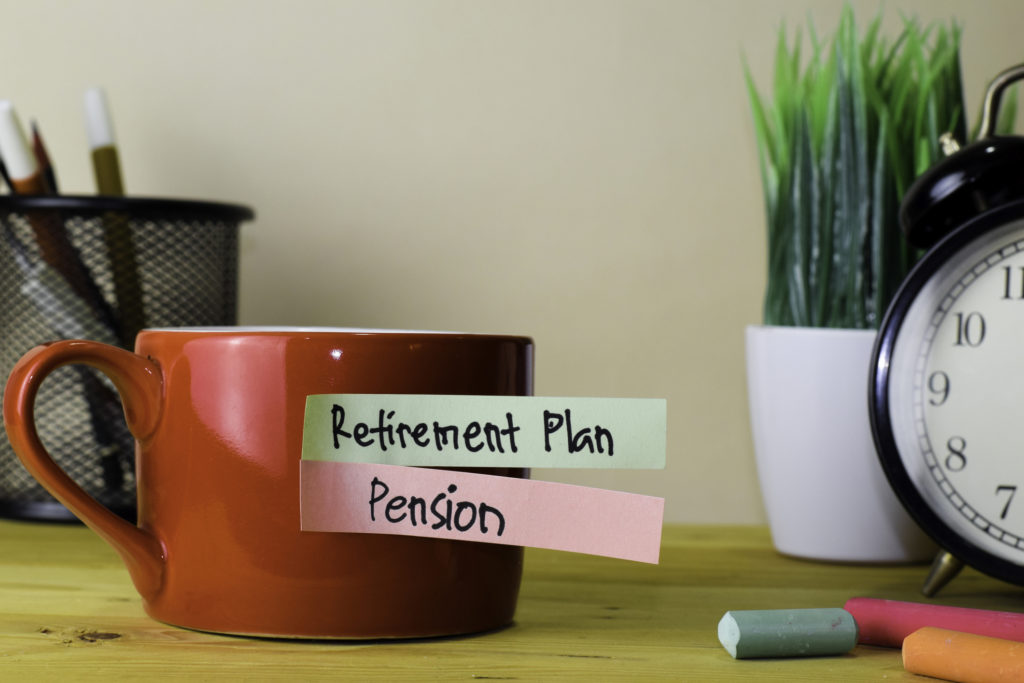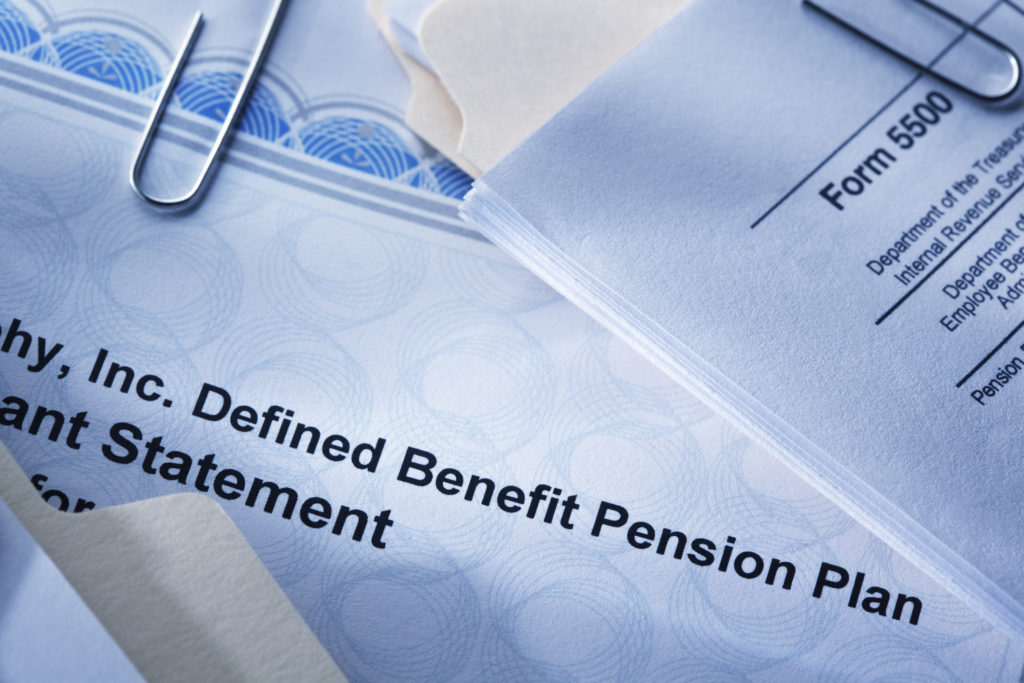Despite the current economic environment, pension saving remains a crucial consideration. RailStaff spoke to the experts.
Retirement may seem a long way off but preparing for your autumn years is vitally important. According to the Office for National Statistics, just 53% of UK adults regularly pay into a pension fund. But with the state pension age rising, those without a private or workplace plan may be working well into their golden years before they can afford to retire. So, what are the options for rail workers? What packages does the rail industry provide and is a private pension a sensible option?
In 2012 the government introduced legislation requiring all employers to offer a workplace pension scheme and automatically enrol eligible workers in it. Since auto-enrolment was introduced, it has proved a gamechanger for the UK’s savings landscape. More than 10 million people are now saving into a workplace pension thanks to the scheme and opt out rates are low.
However, despite the success of auto-enrolment, workers are still not saving enough, broadly speaking. “The minimum contribution rate of 8% between workers and employers has become the de facto contribution rate,” says Robert Cochran, Senior Corporate Pensions Specialist at Scottish Widows. “This is far too low to secure a comfortable retirement for the average saver.
“The government has long talked about evolving auto-enrolment so that more people are saving more money for their future. This includes plans to reduce the age at which people are enrolled from 22 to 18 and removing the lower earnings limit to make it easier for lower-income and part-time workers to save for retirement.”
Circumstantial inequality
The auto-enrolment system also does not apply to some workers, leaving a significant portion of the UK workforce facing difficulties when they finally retire. “This is a particular problem for part-time workers, who are often women,” says Dale Critchley, Workplace Policy Manager at Aviva, “because the first £6,240 of earnings is not pensionable under auto-enrolment regulations. This means that lower paid employees get a lower percentage of their total pay paid into their pension, and those earning less than £6,240 get nothing at all.

“The other group not saving sufficiently into pensions are the self-employed. While 54% of self-employed people have a pension plan in place – perhaps from a period of previous employment – Office for National Statistics (ONS) figures show that only 19% have an active pension plan in place.”
That said, the rail industry has been rather proactive on this issue for some time. Railway companies were some of the earliest employers to arrange pension benefits for their staff and, since 1994, over 150 companies have become part of the Railway Pension Scheme which boasts over 340,000 active and retired members.
“In the rail industry, generally, people are exceedingly engaged in their pensions, compared to other industries, says Mark Engelbretson, Head of Pensions at Network Rail. “Our opt out rates for the Network Rail pension scheme is exceptionally low. I think employees of Network Rail put a very high value on their pension benefits, which is great. Network Rail as an employer also puts a high value on its pension benefits, and that’s reflected in the fact that we offer our employees three very different types of pension benefits, giving them the choice and the flexibility that many other employers do not.”
Tightening the belt
With the UK’s cost of living currently going through the roof, everyone is looking for a way to cut back on expenditure. But diverting money from your pension pot, while tempting, may not be a sensible option in the long term.
“Unfortunately, long term savings are an area people feel they can cut back on because they won’t immediately feel the pain,” says Robert. “The Scottish Widows’ Household Finance Index (Jan’22) found that nearly a quarter of UK households said they would have withdrawn money from their pension if they could have to manage recent unexpected costs. For 34 to 44-year-olds this figure rises to 27%.”
But with the recent rise in National Insurance and energy costs seemingly spiralling out of control, the impact of the increasing outgoings is bound to increase the pressure on savers. “We do have concerns that some people will be more likely to take a contribution holiday,” says Robert. “However, sacrificing your tomorrow to pay for today has real long-term consequences. This is because of the power of compound interest, which makes £100 invested in your 30s worth twice as much as £100 invested in your 50s.”
On the flipside, times of financial strain can cause savers to pay even more attention to their savings, and look for ways to make their money work harder, suggests Romi Savova, CEO of PensionBee. “There are many advantages to saving into a pension, such as government tax relief on personal contributions and free employer contributions for those who are auto-enrolled, making them an attractive long-term investment.

“While it may seem impossible for savers to boost their pension savings at the moment, they should remember that saving for retirement should be viewed as a marathon, not a sprint. This means there may be times where a saver may be able to contribute more or less to their pension. Taking the time to put in place an achievable short-term saving plan can help keep consumers on track, even in times of greater financial stress. This can then be balanced with periods of higher contributions when a saver has more disposable income available.”
Overwhelming options
People put off saving toward their pension for many reasons. For younger members of the workforce, retirement is a remote concept and saving now might not seem so urgent. When you consider the economic struggles young people face today, that’s understandable. Getting on the property ladder is difficult enough, let alone saving for the distant future.
Pensions are also often viewed as one of the least interesting financial products and are seen as overly complicated. The sheer number of pension products on the market can be overwhelming and lead to apathy and indecision.
However, there is a lot of information out there to help an individual start a pension. Many pension companies offer details on their website on how to get started and if your employer offers a workplace pension the individual effort required to sign up is minimal.
“When an individual comes to work for Network Rail,” says Mark, “the default position is that they’re automatically enrolled onto the Network Rail Defined Contribution Scheme, or NRDC as we call it. The starting point there is that the individual and the company make contributions based upon qualifying earnings. Individuals have the option to move their contributions away from qualifying earnings to basic earnings and, if they do, they get matching contribution rates from the employer, which can range from 3% up to 7% of basic salary, with the employee paying anywhere between 0% and 4% to get that matching contribution.
“From day one of joining Network Rail, our employees also have the option of applying to join our Network Rail Career Average Revalued Earnings (CARE) Pension Scheme, which is a defined benefit pensions arrangement. Out of the three schemes we offer, the CARE scheme has the potential of providing the highest level of pension benefit for a high percentage of our employees that have joined since 2016. Signing up is simply a case of filling out an application form when they join the company, or at any point in the future.
“The final option that we offer our is the Railway Pension Scheme, which employees can enter after five years of continuous service with the company. For many, this is seen as the holy grail of pensions but the contribution rate of 7% of pensionable pay is actually slightly less than in the CARE scheme and there is an annual pay cap. Over time, people are seeing that the Railway Pension Scheme doesn’t necessarily keep pace with their basic pay and we’re getting more people look at the CARE scheme.”
If you’re unsure about your own options, it’s worth speaking to your HR or Pensions department about how to join a workplace pension if you are not automatically enrolled or have previously opted out. It may also be a good idea to speak to a financial adviser. “They will talk to you about your hopes and plans for the future and recommend the best products to suit your situation,” says Robert. “Before meeting with a financial adviser, I would recommend thinking about your goals and aspirations for the future, so you are not thinking on the spot.”

How much is enough?
Once you’re enrolled in a pension scheme, you’ll probably wonder whether you’re saving enough. If you’re lucky and long-lived, you may need to live off your savings for 30 years or more, so how full should your pension pot be when it’s time to retire?
“There are three rules of thumb to consider,” says Dale. “Start actively saving for your retirement at least 40 years before the age you plan to retire. Put at least 12% of your salary into your pension every month, which includes a contribution from your employer. Aim to save the equivalent of 10 times your salary into your pension, by the time you retire.”
But there’s no one-size-fit-all solution when it comes to saving for retirement, and individual circumstances, as well as the ups and downs of the economy mean some flexibility may be required.
“It’s estimated most people will need about 70% of their salary to live comfortably in retirement,” says Romi, “however this largely depends on individual circumstances and lifestyle. It’s important for savers to think about how much they can afford to save, how long they’ve got until they retire, and then their desired retirement income.”
“A little can go a long way in terms of pension savings so, if they can, savers should try increasing their current level of contributions by an additional 1-2% percent of their salary. Over time, the compound returns they’ll receive on their savings could have a significant impact on their pension pot by the time they decide to retire.”
The main takeaway is to start putting money away early and to make it a habit. “The key thing with pension saving though is to get into the habit” says Robert. “Regular savings makes the biggest difference and the earlier the better. We call your twenties the golden age of pension savings as it means your money has a really long time to grow.”
Managing your money
Once it’s set up, you can choose to forget about your pension for a while, but the more astute of you might prefer to evaluate its health from time to time. Pensions are often viewed as complicated and difficult to manage, and many people associate their pensions with filling out paperwork, but is this the reality? Surely pensions are simpler to manage and monitor in the age of mobile apps?

The pension industry has been slow to modernise,” says Robert, “but this is beginning to change.” Companies across the industry are creating tools that allow easier access to view pension savings. For example, Scottish Widows customers who bank with Halifax, Lloyds or Bank of Scotland can see their pension balance right next to their current account balance via their banking app.”
Romi agrees that the industry hasn’t kept up with technological trends, to the detriment of consumers. “Slow, difficult paper transfers have been an issue for years in the pensions industry,” she says “with many savers still required to complete paperwork by post for their pension transfers. This is despite electronic transfers being widely recognised as much faster, more efficient, and, crucially, more secure than traditional paper-based methods.
“Apps like PensionBee’s increase consumer engagement with pensions and help savers feel a sense of control and ownership over what’s happening to their money. A wider adoption of modern technology across the industry can help arm savers with easily accessible, up-to-date information, and go a long way to dispelling the belief that investing is too complex to engage with.”
Network Rail’s pension schemes are slightly ahead of the curve and do offer this type of facility, says Mark, but getting people to register and check in regularly is the sticking point. “Each of the three pension schemes Network Rail uses has a member website where members can sign in using their own login details, a little bit like online banking,” Mark says. “Here they can access details on their pensions and their value. They can run calculations and request certain information as well. We have a reasonable number of people registered, but more people need to use these facilities. That’s really important across the whole of the rail industry.
“The technology isn’t perfect yet, but it’s getting a lot better. At the end of the day, a pension is your biggest savings account. You probably check your bank account regularly, and you should be doing the same for your pension.”
The threat of fraud
No matter how closely you track the growth of your pension, it will all be for naught if someone else manages to get their hands on it. With the incidence of online fraud peaking since the start of the pandemic, scammers are increasingly preying on savers simply hoping to make the most of their money. And while the elderly or those in cognitive decline are seen as soft targets, anyone can be targeted.
“Clone-firm investment scams accelerated during the pandemic,” says Dale. “Fraudsters impersonating well-known financial services brand names through online advertising has been fundamental in this type of fraud, which involves persuading people to part with their retirement savings.”
“These kinds of scams can take many forms,” says Robert, “such as receiving an unexpected phone call, email or text offering a ‘free pension review’, or a company that will send couriers to your home to collect paperwork.”

Legislation is currently being discussed which should make the landscape a little safer, particularly when it comes to online pension fraud. The Online Safety Bill has been strengthened with the addition of fraud and financial crime to the list of priority offences and the Pension Transfer Regulations announced in 2021 introduced new measures which give pension providers and scheme trustees the power to say no to a pension transfer when their assessment tells them it is likely to be a scam.
Protect yourself
Regardless, savers will remain responsible for protecting themselves from scams. For starters, you should stay alert and remain suspicious of any scheme that seems too good to be true. Any investments should be thoroughly researched and, if you feel pressured into making decisions, it’s probably a red flag.
“Savers should also be extremely careful when sharing any personal information online,” says Romi, “whether that’s via websites, email and social media. While cold calling is banned in the UK, telephone scams still occur and savers should be wary of anyone calling to offer free advice or recommending they move their investments as this is not something a reputable financial services professional would do.”
Once you’ve reached retirement age, or if you’re nearing it, don’t make the mistake of thinking that the risk has waned. “As you retire, or if you have recently retired, there are some new scams to be on the lookout for,” warns Robert. “As you can take all of your retirement savings at once, fraudsters will likely try to target customers who have access to large lump sums of money. Therefore, there may be a significant increase in scams to steal pension money, or high-pressure sales techniques to tempt customers into risky or poorly managed investments.”
Fraudsters are always looking for new ways to get hold of people’s hard-earned money and pension savers should always be vigilant.
Protect your family
One final piece of advice regards what happens to your pension should you pass away before you reap its benefits. When you open a pension, you’ll be asked to nominate potential beneficiaries who receive the proceeds of the plan when you die. However, many fail to do this, and what happens to their pension may not be in line with their wishes and may not benefit the loved ones they leave behind.
“It still surprises me just how few people have filled out their nomination form, says Mark, particularly in light of the events of the past two years. You should really be filling out a new nomination form every two to three years, even if you nominate the same person, because that way gives a very clear message as to who you want that benefit to go to should the worst happen.”
Image credit: istockphoto.com

